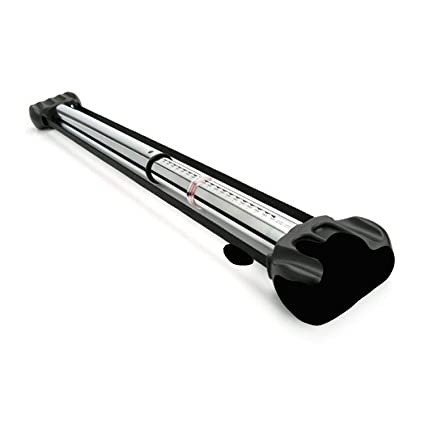Due to their efficiency and effectiveness in increasing strength and muscle, enhancing joint stability, and saving time, isometric exercises have significantly increased in popularity in the fitness industry. You will receive a thorough explanation of isometric exercises in this article, including information on what they are, how to perform them, and how to incorporate them into your fitness regimen. Additionally, you will discover the scientific underpinnings of this training approach, the safety considerations, and the use of isometrics in rehabilitation.
Introduction
Exercise that involves only static muscle contractions and no joint movement is referred to as isometrics. Isometric workouts demand you to retain a particular position while applying force to an immovable object or resisting an outside force rather than actively moving through a range of motion. This form of exercise has been used for ages and is now well known for its capacity to increase fitness and strength.
Background of Isometry in History
Isometrics has a long history that dates back to antiquity. It was frequently used in martial arts and yoga, where maintaining still stances or postures was thought to be essential for developing strength and balance. Isometric exercises were developed as a rehabilitation technique for patients who were bedridden in the early 20th century by a German doctor by the name of Theodore Hettinger. Since that time, isometrics has advanced and turned into a well-liked training technique in a variety of sports, fitness, and rehabilitation programs.
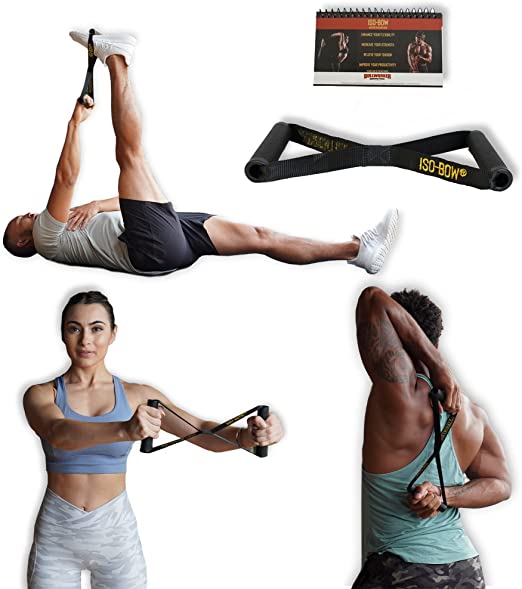
Bullworker Iso-Bow | Isometric Exercise Equipment; Portable Home Fitness Training Strap for Fast Strength and Flexibility Gains, Traveling Stretching Tool for Yoga and Pilates (Does not Stretch)
Benefits of Isometric Exercises
Strength and Muscle Development
Isometric workouts are very good for increasing muscular growth and strength. Your muscles flex against resistance while you are in a static position, tightening the muscle fibers. The muscle fibers are stimulated by this strain to adapt and progressively get stronger. Isometric exercises isolate and effectively develop particular muscle groups or individual muscles by targeting them.
Enhancing Joint Stability
Exercises with isometric resistance are essential for enhancing joint stability. Isometric exercises increase the stability and support that the muscles and connective tissues around a joint provide by contracting those muscles without moving the joint. Those who are recuperating from joint injuries or trying to avoid future problems may find this to be especially helpful.
Efficiency in Time
Isometric workouts have a number of benefits, including being time-effective. You may do these exercises faster than you can with a typical workout because they don’t require dynamic movements or transitions between activities. When you have little time but still want to work several muscle groups and experience the advantages of strength training, isometrics can be extremely helpful.
Isometric Exercise Techniques
Targeting various muscular groups, isometric exercises can be done in various positions. Here are a few of the most popular isometric exercises:
Push-Ups in Isometric
Start by placing your hands slightly wider than shoulder width apart in the classic push-up position. Keeping your body in a straight line from head to toe, stoop halfway down.
Focus on maintaining your core engaged and your muscles contracted as you hold this position for the predetermined length of time.
Repeat for numerous sets while taking it slowly back to the beginning position.
Wall Pose
Your feet should be shoulder-width apart as you stand with your back against a wall.
Bend your knees to a 90-degree angle and slide your back down the wall while doing so.
Hold this position while making sure your back is flat against the wall and your thighs are parallel to the floor.
Maintain the position for a certain amount of time, extending the time as you advance.
Plank
Start by laying on the ground face down.
With your elbows in line with your shoulders, place your forearms on the ground.
Standing on your forearms and toes, raise your body off the ground.
Use your core muscles to maintain a straight line from your head to your heels.
Hold this pose for the allotted amount of time, paying close attention to your form.
Squat in Isometric
Stand with your feet separated by a shoulder-width and your toes pointing outward.
Sit back into an imagined chair by lowering your body into a squat stance.
When your thighs are parallel to the ground and you are in the lowest position of the squat, pause.
Keep your back straight and your knees in line with your toes while you hold this position.
Before going back to the beginning position, hold the isometric squat for a certain amount of time.

WorldFit ISO Trainer – Isometric Exercise for Strength Training, Stretching, Yoga, Pilates – a USA Company (Black)
Exercises that Work Different Muscle Groups Isometrically
Isometric exercises can target a variety of muscle groups, enabling you to design a workout plan that is diverse. Here are a few instances:
Upper Body Isometrics
Isometric bicep curls involve performing bicep curls with a dumbbell or resistance band while pausing at the halfway point and maintaining the position.
Hold a weight or resistance band at shoulder level with your elbows bent at a 90-degree angle for the isometric shoulder press. When your arms are fully stretched, stop pushing up against the resistance.
Lower body exercises
Isometric Calf Raise: Place your heels over the edge of a step or platform while standing there. As you stand on your toes, maintain the highest position.
Lie on your back with your knees bent and your feet flat on the ground to do an isometric glute bridge. When your body is in a straight line from your knees to your shoulders, stop lifting your hips off the ground.
Basic Isometry
Isometric Plank with Leg Lift: While holding a firm core, assume a plank position and lift one leg off the ground.
Isometric Side Plank: Maintain a straight line while supporting your body weight on one forearm and the side of one foot. Maintain this posture on both sides.
Including Isometric Exercise in Your Fitness Program
Isometric exercises can be incorporated into your workout program in a variety of ways. Here are a few ideas:
Independent Isometric Exercises
Set aside particular days or times just for isometric workouts. Targeting several muscle groups is the key, and you should gradually lengthen each workout.
Including Isometric Exercises in Other Exercises
Include isometric holds in your regimen for strength training. For instance, before completing the complete range of motion in a bench press or squat, pause halfway through and hold the position for a few seconds.
Dynamic Exercises with Isometric Holds
Incorporate isometric holds in between dynamic workouts to boost the ante and involve more muscle groups. For instance, complete a wall sit before moving on to a set of squats, or hold a plank position for 30 seconds in between sets of lunges.
Isometric exercises can improve your general strength, stability, and muscle development in your workout program. To determine what works best for you, try out various combinations and variants.
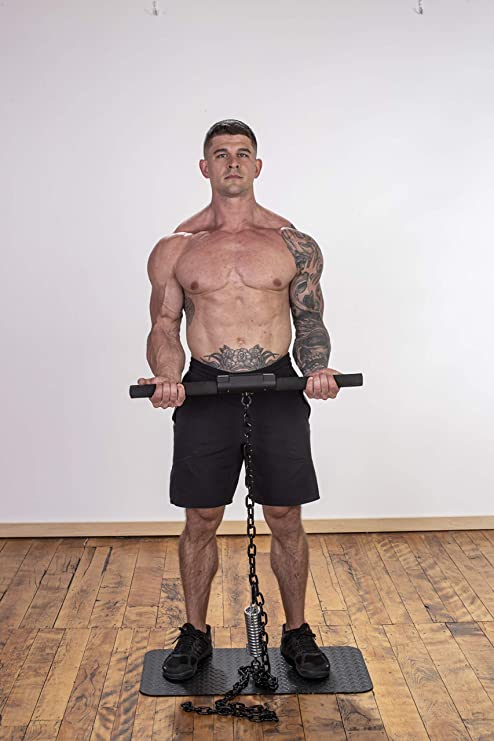
Dragon Door Isochain Isometrics Training Device
Isometric training security and safety precautions
Although isometric workouts have a lot of potential benefits, it is crucial to put safety and correct form first. Think about the following safety measures:
Proper technique and form
In order to avoid injuries and maximize the benefits of isometric workouts, it is essential to maintain appropriate form. Pay attention to how your body is aligned, use the right muscles, and refrain from overextending or stressing any joints.
Gradual Advancement
As your strength and endurance increase, progressively increase the time and resistance by starting with shorter durations and lower intensities. To avoid injuring or straining your muscles, avoid pushing yourself too hard or too rapidly.
Breathing Methods
Every isometric exercise should be performed while breathing steadily and under control. When your muscles are contracting, exhale, and when they are relaxing, inhale. Your core will be stabilized, which will improve performance all around.
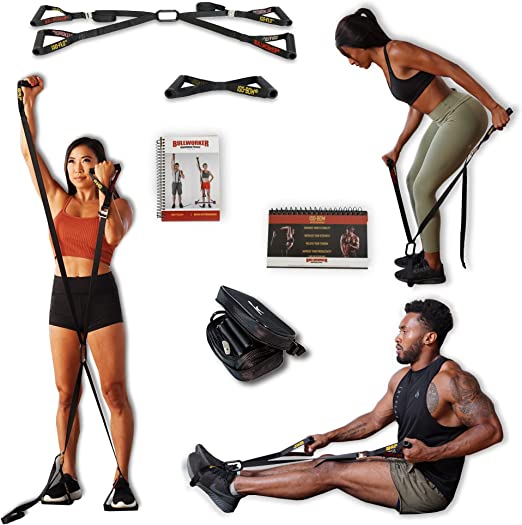
Bullworker ISO-FLO – Total Body Fitness with Isometrics and Iso-Motion for Movement Performance
Isometrics for Injury Prevention and Rehabilitation
Isometric exercises have demonstrated to be useful in injury prevention and recovery plans. Isometrics can assist in the following ways:
In physical therapy, isometrics
Isometric exercises are frequently used by physical therapists to speed the healing of injured muscles and joints. Isometric exercises can assist strengthen particular areas without overstretching wounded tissues, speeding up the healing process.
Injury Recover and Prevention
By bolstering the muscles around joints and enhancing general stability, including isometric exercises in your normal workout regimen might help prevent injuries. Isometric exercises aid in the rehabilitation process after an injury by gradually regaining strength and range of motion.
The Science of Isometric Exercise
Beyond anecdotal evidence, isometric workouts are useful. The physiological mechanics and advantages of this training technique have been clarified by research:
Muscle Recruitment and Activation
The targeted muscles are actively used by a large number of motor units during isometric exercises. This high rate of motor unit recruitment encourages the growth of muscle fibers, resulting in more strength and hypertrophy.
Metabolic and Hormonal Responses
It has been demonstrated that isometric exercise causes the release of more growth hormone and testosterone. These hormones are essential for the maintenance, development, and composition of muscles. Additionally, isometric exercises cause metabolic reactions that enhance metabolic and cardiovascular health.
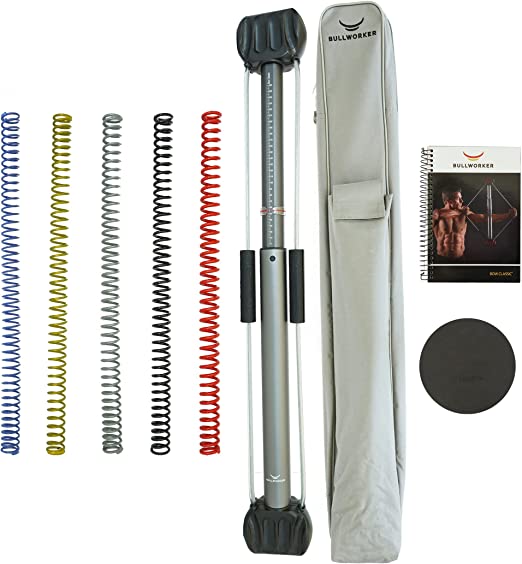
Bullworker Bow Classic 36″ | Full Body Workout (includes spiral-bound manual and carrying case); Home Gym Isometric Exercise Equipment for Fast Strength Training Gains. Cross Training Fitness; Chest, Back, Arms, and Abs Exercise Machine
Conclusion
Isometric workouts provide a special and efficient method for building muscle, strengthening the body, and avoiding injuries. Isometric exercises provide many advantages for everyone, whether they are fitness enthusiasts, athletes, or people who are healing from injuries. Always pay attention to appropriate form, increase your exercise intensity gradually, and pay attention to your body. You can take your fitness quest to new heights by utilizing the power of static exercises.
Frequently Asked Questions (FAQs)
How effective are isometric workouts for weight loss?
The main goals of isometric exercises are strength and muscle development. While they can help with overall calorie expenditure, a balanced diet and cardiovascular activity are crucial for weight loss.
Anyone able to perform isometric exercises?
The majority of people can benefit from isometric exercises. Before beginning a new workout regimen, it is suggested to speak with a healthcare provider or a trained trainer if you have any underlying medical issues or injuries.
How frequently should I do isometric exercises?
Your overall fitness objectives and current level of fitness will determine how frequently you should perform isometric exercises. It is advised to combine them with other forms of exercise two to three times a week.
Isometric exercises can help with posture, right?
Isometric exercises can aid with posture correction. Isometric exercises help improve posture over time by strengthening key muscles that support good alignment, including the core, back, and shoulders. Stretching and strengthening exercises should be part of a complete strategy that also addresses any underlying postural problems.
Are isometric workouts appropriate for senior citizens?
Isometric exercises are a low-impact technique for older persons to increase their strength and stability. Individual health and fitness levels must be taken into account, and adjustments might be required. A safe and efficient program can be created with the help of a competent trainer or healthcare expert.
